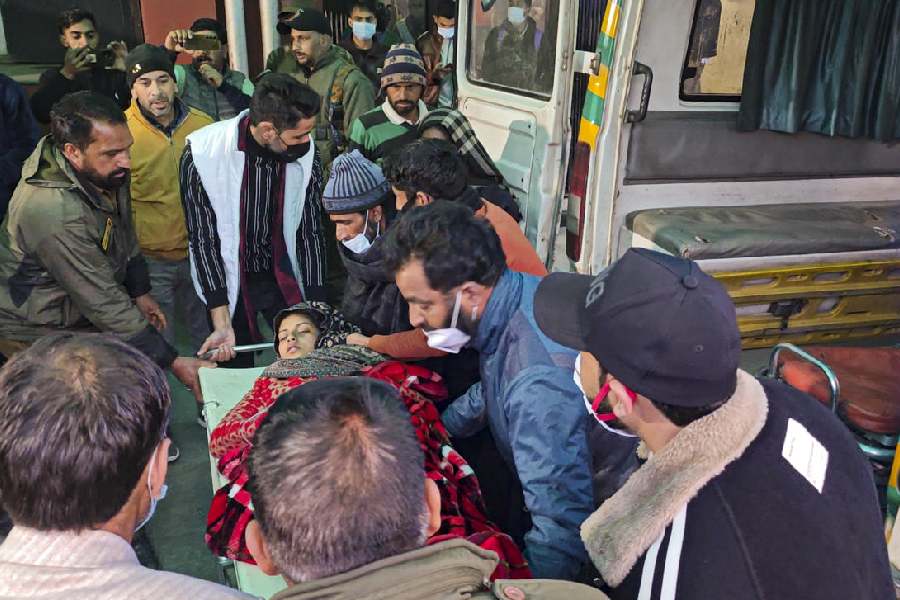 Thursday, 23 January 2025
Thursday, 23 January 2025
 Thursday, 23 January 2025
Thursday, 23 January 2025
The southern Indian state of Kerala is still recovering from the shock and ravages of its worst landslide in its history. The estimated death toll is 333 and around 281 people are missing.
Wayanad district, situated in the ecologically sensitive Western Ghats and renowned for its misty mountains and lush landscapes popular with tourists, is grappling with the severity of a disaster that, in the words of Chief Minister Pinarayi Vijayan, has "wiped out an entire area".
The Chooralmala-Mundakkai region in Meppadi Panchayat, which was the worst hit, falls under the Ecologically Sensitive Zone 1 (ESZ1) identified by the Western Ghats Ecology Expert Panel led by ecologist Madhav Gadgil in 2011.
The Gadgil report had warned against anti-environmental activities in the area due to its unique geography and thick forest cover.
Chooralmala and Mundakkai are among the remote forest-adjoining areas in Wayanad, inhabited by tea plantation workers and farmers who also run small businesses.
A few houses are still standing in Chooralmala, but the landslide didn't spare any human construction in Mundakkai. A couple of people survived by sheer luck.
It's not the first time disaster has struck the region. In 2019, a major landslide in Puthumala, just a few kilometres away, claimed 17 lives, damaged property and rendered the land largely uncultivable.
The destruction of land and property this time has devastated the local economy.
Unusually heavy rainfall, estimated to be around 1830mm over the past 30 days, preceded the disaster.
Climate scientists have identified a connection between the Wayanad landslides and the heating up of the Arabian Sea, which leads to the formation of deep cloud systems. This phenomenon is a consequence of global warming. The mountain ranges of the Western Ghats also block moisture-laden airflow, increasing the likelihood of localised extreme rainfall events in areas like Wayanad.
The cost of development Development aspirations were high in the region due to its proximity to Kalladi, the entrance to the four-lane tunnel road project connecting Bengaluru with Kozhikode.
The tunnel, which is set to become the third-longest in India and is being built by the Konkan Rail Corporation Limited, has faced criticism from environmental groups for the risks it poses to both wildlife and the increased occurrence of floods and landslides.
Tourism was thriving in the Chooralmala-Mundakkai areas following the "discovery" of "exotic" new locations and the increasing popularity of old favourites such as Soochipara Waterfalls.
Baby, a local farmer, said there has been a huge increase in the number of resorts and homestays over the past few years, many of which are located in picturesque but landslide-prone hilly areas.
This trend is similar to that of many new concrete houses built over the last decade, primarily funded by remittances from the Gulf countries.
The compound effect of unplanned development, deforestation, land use changes and heavy rainfall driven by global warming over a short timespan is understood to be the major cause of the recurring landslides.
Following the latest landslide, more than 150 tourists were stranded in multiple resorts as debris blocked all the roads connecting them.
Thousands of landslide survivors have been accommodated in schools around the nearby town of Meppadi. One school teacher volunteering in a relief camp remarked that there was no shortage of food or clothes as aid from other districts and neighbouring states was generously pouring in.
However, there was constant screaming and utter confusion over identifying victims.
The people in the relief camps have to search for their loved r ones among the unidentified and distorted corpses or body parts recovered from deep inside the mud or from the Chaliyar river, kilometres away from Chooralmala-Mundakkai region.
Psychological impact of climate disasters the people of Wayanad are predominantly religious, and performing death rituals according to their respective faiths is an integral part of social life. The places of worship for the three major religions — Hinduism, Christianity and Islam — have been destroyed during landslides.
A massive loss of human life in a limited area and the inability to perform death rituals are not part of the personal experiences and social memory of Keralites.
Research shows that natural disasters have a significant psychological impact on survivors. It is promising that this realisation was immediate at the ministerial level in Kerala following the tragedy.
"Much more than the physical injuries, what affected the survivors the most was the mental trauma caused by the death of their loved ones overnight, said State Minister VN Vasavan, who was part of a high-level team that visited the hospitals with Wayanad residents who survived the tragedy with injuries.
"Many of them were in a state of absolute despair following the loss of those close to them, who were sleeping in the next room. Once the medical treatment is over, they need to be shifted for psychological counselling." However, the mental health infrastructure is inadequate for providing long-term psychological support, with even the major mental health centres in Kerala lacking the facilities required by the Mental Healthcare Act. Even though there is a government-run scheme to appoint a trained psychologist in every school, a shortage of funds has affected its proper functioning.
The new climate refugees It is becoming increasingly common for high-risk, landslide-prone regions in the Western Ghats to experience extreme rainfall in a short span of time. For instance, Mundakkai recorded an alarmingly high 572mm of rain in just 48 hours before the disaster.
The Wayanad disaster has significantly increased the number of people in Kerala who have been forced to leave their homes due to climate change, commonly referred to as climate refugees.
A new category of "temporary" climate refugees is emerging, as it has become common for people living in landslide-prone areas of the Western Ghats to shift to their relatives' houses, often unwillingly, during periods of extreme rainfall.
The majority of people living in relief camps in Meppadi have no idea where to go or what to do in the future. They only know that they need to move out of the schools soon so their children can continue their studies.
Following the Puthumala and Kavalappara landslides in 2019, despite substantial delays, the Kerala government initiated special schemes to relocate and rehabilitate the survivors with support from private players.
However, if a mega disaster like the one in Wayanad was to unleash thousands of climate refugees, the Kerala government, which is already struggling economically, would not be able to accommodate them all.
Finding suitable land in nearby localities is another major challenge. In most cases, the survivors, who were dependent on the local economy and lived in close-knit neighbourhoods or kinship communities before the disaster, are resistant to relocating to distant places.
The Chooralmala-Mundakkai landslide is a defining moment for conserving the Western Ghats, which span six states in India, as it underscores the importance of preserving human lives in the region amid the challenges of climate change.
How Kerala, globally acclaimed for its development indicators and widely regarded as a ‘model state', addresses climate disasters in the coming years will be crucial for the entire country.
360info.org
Except for the headline, this story has not been edited by The Telegraph Online staff and has been published from a syndicated feed.







